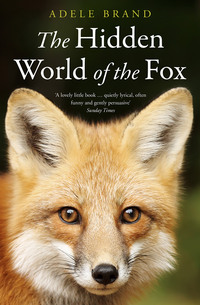
Полная версия
The Hidden World of the Fox
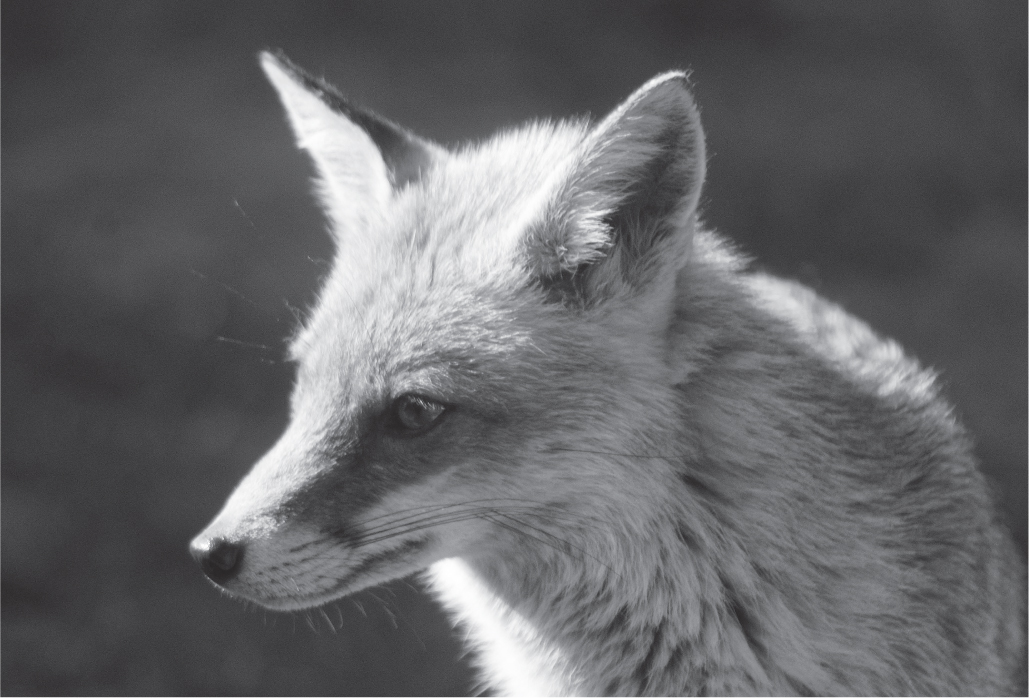
Foxes are often active in daylight where they are undisturbed.
In Britain, field voles tend to be diurnal – day active – if the temperature drops below freezing, and foxes, and indeed barn owls, naturally follow suit. Needless to say, if they find a person who regularly feeds them pork sausages in daylight, they will adapt their activity around that food source instead. I have also known several low-ranking foxes that opted for daytime travel to avoid confrontation with dominant individuals.
Radio-tracking has shown that the daily wanderings of a territory-owning fox fall into two distinct types. The first is a circumnavigation of its entire territory, and the second – and more common – is of visits to different parts of their range each night. Varying their journeys gives them the optimum chance of exploiting food resources; if they were to concentrate on the same field month upon month, it would eventually run dry of voles while the untapped pasture half a mile away is awash with them. It is worth adding that the enormous bounty provided by people who feed garden foxes has added a third trend: foxes who travel little and appear in sizeable numbers in specific sites every day.
Under more natural conditions, foxes tend to cross the landscape in a large-scale zigzag pattern. They are often religiously loyal to specific routes, wearing narrow paths into grass through repeated trampling. In the wilderness, they climb onto fallen tree trunks and walk down their full length as a kind of elevated track; in Britain, they occasionally exploit railway lines instead. Last year, I was shown some startling footage of a fox in Wales trotting briskly down a train rail hardly wider than a human hand, balancing like an expert on a tightrope.
Railways and foxes often occupy the same sentence. While human commuters frequently feel that our rail network is more of a hindrance than a help to travelling, it is commonly stated that our vulpine neighbours are transported by them. Not as passengers – although there are several credible accounts of urban foxes jumping on board public transport – but rather as walkers along the banks. Even at those moments when the Gatwick Express thunders past the East Croydon congestion at 100 mph, and on just the other side of Network Rail’s perimeter fence, millions of people shop, argue and check their phones, the embankments themselves remain one of the least disturbed environments in the city. It is often said that foxes first immigrated to London in the 1930s, the pioneers moving down railway lines into this new brave world full of human creatures.
But when talking of the arrival of fox in city, it is as well to remember that city has also travelled extensively into the traditional land of the fox. London has bloated massively over the last two centuries, and despite the best efforts of greenbelt campaigners, continues to do so. Many of today’s ‘urban’ foxes may be descended from ‘rural’ foxes whose habitat was suddenly turned into housing estates. Incidentally, records of foxes near towns in Finland date back to the medieval era, and their distinctive barks were heard in Tokyo in the ninth century. There is even some suggestion that foxes scavenged on abandoned scraps from humans as long ago as the Palaeolithic – the Old Stone Age.
Regardless, considerable research has taken place in recent years to establish the impact of railway lines on fox densities and movement patterns. But evidence that dispersing foxes, and indeed territory-owners on the hunt, are funnelled by the railways is also remarkably scant; radio-collared foxes have shown little preference for the train lines.
Taking the wider view, why would they? Humanity has proved tragically skilful in fragmenting the habitat of hedgehogs, toads and dormice, but foxes are much more capable travellers. They can and do cross roads, car parks and fences. Even the natural world’s topography has little impact; genetic sampling from Croatia has shown that they migrate freely across rivers and small mountains.
When not travelling or feeding, foxes require a suitable place to rest. This may be anywhere within their home range, even close to the territorial border. Foxes have more than one den, including sites that may only be used temporarily. Researchers in Polish farmland found that earths tended to be dug on steep south-facing slopes, with western exposure avoided, possibly due to the prevailing westerly winds. In suburban Britain, foxes often rest on greenhouse roofs or sunbathe in quiet alleys. I’ve found one stretched out contentedly on warm plastic in a narrow gap between a wall and a garage, peaceful and safe, despite being within metres of a major supermarket car park used by hundreds of humans each day.
BUT THE STRAND is crossed by thousands upon tens of thousands of people. Even at midnight, it is alive: lights on the arching stonework, music thumping from cars as they choke in bus-filled traffic jams. I’ve come back here because I want to better understand the miracle of foxes in a desert of towering grey rock. Friday night has spilled people upon the streets, shouting, selfie-taking, watching buskers batter their drums. More of them sprawl between the paws of the giant lions of Trafalgar, strangely drawn to the cold stone models of wild animals. Night itself seems defeated by the battle squadron of lights jumping upon these grandest of buildings, reflecting on the river, luring punters into shops. So it continues on the journey southwards: shuttered shops, drunken youths, urban cries and urban dreams.
There is a fox.
A male, all long limbs and thick brush, sits on a patch of grass under one of Brixton’s tower blocks, half illuminated by streetlight. He turns his head towards the car as we pass, watching, just like his kin in the silent and utterly wild Thar Desert.
Adaptability.
That, in essence, is the fox’s gift.
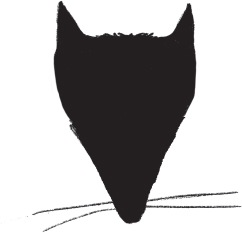
4
What Does the Fox Look Like?
The world is full of magic things, patiently waiting for our senses to grow sharper.
W. B. YEATS
IN A LONELY ARABLE FIELD in eastern Surrey, the North Downs Way National Trail and the Prime Meridian collide in a crossroads perfectly aligned to the points of the compass. To the south lies the ceaseless rumble of the M25 and its luxurious trim of rolling green countryside. Northwards rises the chalky ridge of the Downs – due north, in fact, and I know this from my map and the position of the sun. But if I were a fox, my navigation might be written into my physical senses.
Slightly offset from true north, the Earth’s magnetic north pole drifts each year due to the behaviour of molten iron in the planet’s outer core. The invisible magnetic field that envelops our planet protects us from harmful cosmic rays while also playing host to the geomagnetic storms that produce spectacular auroras: the northern and southern lights. It has had a profound impact on human history, because compasses – those aids to explorers, traders and armies for millennia – only work because their magnets swing to the poles, where the field’s inclination is vertical.
The geomagnetic field and its poles also have very real significance for animal behaviour. Birds may navigate by it, rats become more restless during magnetic storms, and some researchers have argued that resting cows tend to align themselves pointing poleward, except under power cables which locally disrupt the field.
And foxes, perhaps, hunt by it.
Imagine that you need to catch a rodent in dense cover. The rodent, naturally, does not want to be caught, and is equipped with formidable defensive senses of its own. It may also have awkward behaviours; bank voles, for example, reduce their activity upon detecting fox scent, for the rustles of their feet on vegetation are, perhaps aptly, their Achilles heel. But hearing may not be the fox’s only means of pinpointing its target.
A fox that is stealthily approaching its intended meal will be most successful if it orientates itself either within about 20 degrees of the magnetic north, or due south, at least according to one recent study. Leaps from other directions usually fail to pin the prey. If foxes are indeed capable of magnetoreception, the mechanism by which they perceive the direction of the magnetic poles is unclear. The authors of this study speculate that foxes perceive the geometric field as an area of light or shade in their vision – in fact, even in people, laboratory tests show that the field impacts light perception.
Foxes may use the directional information from the magnetic field together with auditory input from the vole’s rustling to move to a fixed distance from the target, allowing a precise leap. If so, foxes are the first species known to use the magnetic field as a measure of distance.
THE PHYSICAL FOX – the frame that supports this curious, intelligent, beguilingly strange canid lifeform – is complex. That frame is aesthetically pleasing to many human observers, but our perception of beauty is irrelevant to the creature itself. It is the demands of survival that have whittled the fox’s senses, size, bone structure, brush shape and teeth.
What has emerged is almost the perfect formula: a carnivoran that is omnivorous – a generalist – yet which still carries a specialist’s trump card. As we have already seen, the fox can survive almost anywhere, and on a mind-bogglingly diverse array of food; but for all its catholic tastes, it has never lost its finesse in hunting rodents. Much of what we admire about the fox is a direct adaptation to the challenge of catching such small, swift prey. In a very real way, foxes are built around mice.
It is part of their bones – especially in North American foxes, which have limbs considerably lighter than expected for a canid of their size. A light frame with a small stomach can be launched with ease at a rodent-sized target. The huge tail aids balance.
Foxes are guided by their hearing, which is sensitive to a degree that human imaginations might leave short. Every winter I observe foxes hunting field voles in frosty meadows, weaving slowly through quiet tussocky grasses in a gentle amble so different from a travelling fox’s precise, purposeful trot. One morning, I was watching a handsome russet fox in a sloping field, when he veered sharply to his left, tilted his head – raising one ear canal above the other to better pinpoint a sound’s position – walked about 6 metres (20 feet), and pounced on a rodent.
A fox can hear a much wider range of frequencies than us; their upper range is similar to a dog’s, while the lower range is comparable to that of a cat. Their eyesight is much weaker than ours, but photographing a fox at night with a flash uncovers one of its ocular secrets. Unless you are very careful or fortunate, the resulting image will feature a coloured washout of the animal’s eyes. The culprit is the tapetum lucidum, a remarkable layer of tissue directly behind the retina. Present in many creatures that are active in low light levels, from fish to tigers, it reflects visible light back through the retina, effectively brightening the world for its owner.
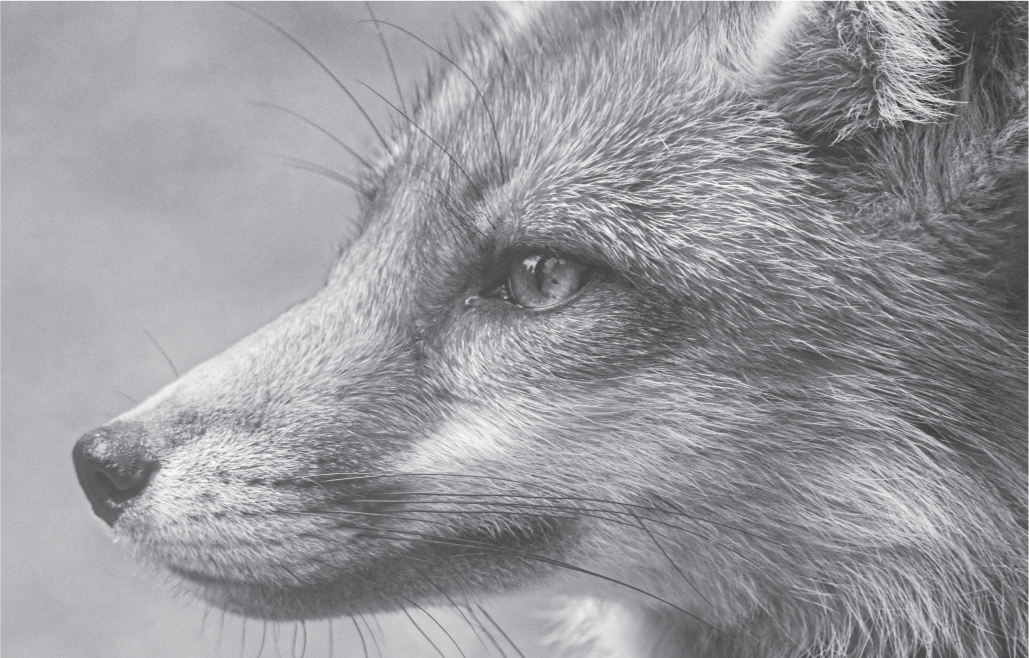
A fox sees, smells and hears the world very differently to us.
Domestic dogs possess a tapetum lucidum too, but in another aspect their eyes are very different from those of a fox. In bright light, a dog’s pupils contract to a round shape, which is not surprisingly also the case for the ancestral grey wolf. But a fox’s pupils contract vertically, like those of a small cat. Is this an advantage? Absolutely. Canid eye lenses contain concentric zones of different focal lengths, and a vertical pupil can exploit all these zones even when at its narrowest in bright light. This improves the focusing of long and short wavelengths of light, reducing or eliminating chromatic blur/haze in bright conditions. In short, foxes are multifocal.
More differences from dogs are under the skin. Fox skulls can appear superficially similar to those of dogs – I recently had to confirm the identity of one unusually large fox skeleton by examining whether the pre-orbital processes in its muzzle were concave or convex – but it is always worth considering the sagittal ridge. This runs vertically across the top of the braincase, and in case you are now rubbing the top of your head, please be reassured that you do not possess one. It is found in some great apes, however, as well as many Carnivora species, and even some dinosaurs. Attached to the sagittal ridge are the temporalis muscles, which are used for biting. The bigger the ridge, the more powerful the snap of those jaws.
Many thousands of years ago, foxes shared North America with a huge canid called the dire wolf. We have learned of this species Sherlockian-style, piecing its life together from minute details of the bones it has left behind, mostly in the macabre La Brea Tar Pits of California. This lethal but fossil-rich site has gifted museums a grand surplus of dire wolf skeletons. One is now on display at the Natural History Museum in London, and I recommend pausing beside it should you be visiting South Kensington, for the sagittal ridge jutting out from its skull cuts an eye-wateringly impressive flange. A mighty hunter that pursued bison and elephants, or a mighty scavenger that crunched the bones of carcasses left behind by giant cats; we will never know. Regardless, its jaws packed incredible power.
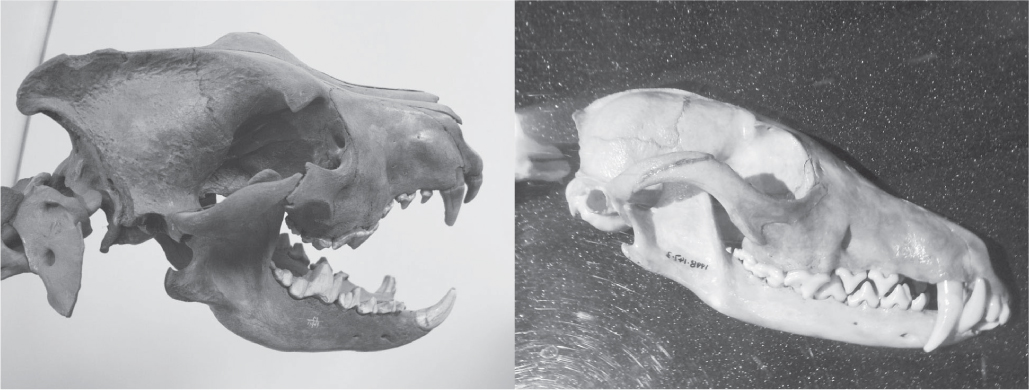
Skulls of a dire wolf (left) and a red fox.
Foxes don’t hunt mammoths. Their sagittal ridge is remarkably small; in fact, their bite is weaker than that of a dog of the same weight, a fact exploited by many huntsmen over the centuries. Some dog breeds bred to kill foxes, such as Jack Russells, are noticeably smaller than their targets.
But just how big is a fox? It is a complicated question because they play an optical illusion on the human brain: they appear larger when they are further away. Some of us suspect the same phenomenon occurs with pet cats, which suddenly become ‘black panthers’ and ‘Beasts of Bodmin’ when sighted across a foggy meadow. Regardless, despite media speculation, there are no foxes the size of Labradors wandering British streets.
Measured objectively, a fox often weighs less than a pet cat: the average weight of male foxes in England is 6.7 kg (14 lb), with vixens about a kilogram (2.2 lb) lighter. Scottish foxes are somewhat bigger, with males tipping the scales at an average of 7.3 kg (16 lb). Of course, this is not due to over-indulgence in haggis, but rather an example of Bergmann’s rule – the ecological principle that in a species with a broad geographic range, individuals in colder climates are likely to be larger.
Head and body length averages 62–65 cm (24.4–25.5 in.) in English foxes; for comparison, a typical domestic cat is around 46 cm (18 in.). The thickly furred brush is equal to about 70 per cent of the fox’s body length.
Конец ознакомительного фрагмента.
Текст предоставлен ООО «ЛитРес».
Прочитайте эту книгу целиком, купив полную легальную версию на ЛитРес.
Безопасно оплатить книгу можно банковской картой Visa, MasterCard, Maestro, со счета мобильного телефона, с платежного терминала, в салоне МТС или Связной, через PayPal, WebMoney, Яндекс.Деньги, QIWI Кошелек, бонусными картами или другим удобным Вам способом.





